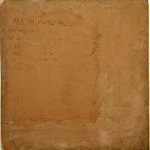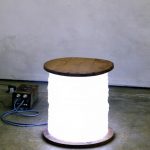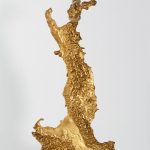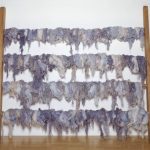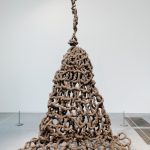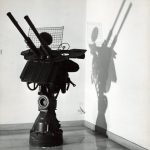ART:Arte Povera
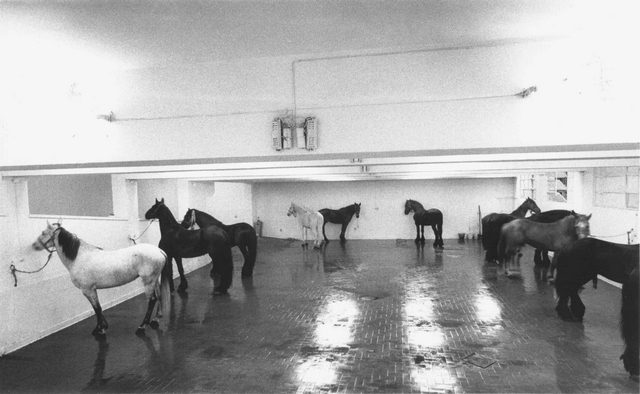
On the occasion of a plurality of exhibitions around the world by acclaimed Galleries such as: Bernier/Eliades Gallery in Athens, (2/10-13/11/14), Luxembourg & Dayan in London “Alighiero Boetti: i Colori” (14/10-31/12114), η Gagosian Gallery in Beverly Hills, “Giuseppe Penone: Ramificazioni del Pensiero” (5/9-18/10/14), and Sprüth Magers Gallery in Berlin with the exhibition Arte Povera & “Muitipli” (18/9-1/11/14).
“FIRST COMES THE HUMAN being and then the system, or that’s how it was in antiquity. Today, however, society presumes to make prepackaged human beings, ready for consumption. Anyone can propose reform, criticize, violate,and demystify, but always with the obligation to remain within the system. It isforbidden to be free. Once you create an object, you always have to remain by its side. That’s what the system commands. This expectation is never to be frustrated,and once an individual has assumed a role, he has to continue to perform it until death. Each of his gestures has to be absolutely consistent with his behavior in the past and has to foreshadow his future. To exist from outside the system amounts to revolution” Germano Celant “Arte Povera: Notes for a Guerilla War”. Arte Povera Movement (Poor Art-Proletarian Art) was during 1967-1972 and took place in cities throughout Italy: Turin, Milan, Rome, Genoa, Venice, Naples and Bologna. Was the most significant and influential avant-garde movement to emerge in Europe in the 60s. The work of Arte Povera artists marked a reaction against the modernist abstract painting that had dominated European art in the 1950s, hence much of the group’s work is sculptural. But the group also rejected American Minimalism, in particular what they perceived as its enthusiasm for technology. In this respect Arte Povera echoes Post-Minimalist tendencies in American art of the 1960s. But in its opposition to modernism and technology, and its evocations of the past, locality and memory, the movement is distinctly Italian. The first exhibition “Arte Povera e IM Spazio,” which was staged at Galleria La Bertesca in Genoa, in two sections “Arte Povera” which included the work of: Alighiero Boetti, Luciano Fabro, Jannis Kounellis, Giulio Paolini, Pino Pascali and Emilio Prini. And the section “Im Spasio” which included the work of: Umberto Bignardi, Mario Ceroli, Paolo Icaro, Renato Mambor, Eliseo Mattiacci και Cesare Tacchi. Curator was the Art Theoretic Germano Celant to describe the work of a new generation of Italian artists who wanted to destroy the division between life and art. Germano Celant became one of Arte Povera’s major proponents curating two other two exhibitions the years 1967, 1968 ‘’Arte Povera” at the De Foscherari Gallery, Bologna and “RA3 Arte Povera + Azioni Povere” στην Arsenali della Republica at Amalfi’. Two months after the first exhibition Germano Celant wrote a manifest, “Arte Povera: Notes for a Guerilla War”. The first team of Arte Povera artists affiliated by: Giovanni Anselmo, Piero Gilardi, Mario Merz, Gianni Piacentino, Michelangelo Pistoletto and Gilberto Zorio. Germano Celant also wrote a book published by Electa in 1985 called “Arte Povera Storie e protagonisti”, promoting the notion of a revolutionary art, free of convention, the power of structure, and the market place. Arte Povera is most notable for its use of everyday materials, such as: iron, wood, charcoal, sludge, basic foodstuffs, etc. and talked about a work of art that crosses the boundary between life and art. Marked a conflict with the art of painting and especially the expressive tradition, revolted against all Western Art, which was dominated by the School of Vision. The artists of the Arte Povera agreed not only to deny the aesthetic practice of Abstract Art and the consumption-oriented design, beyond their differences in theoretical positions, they had a common goal. To extend the range of art on that sociopolitical area in which we should build the creative process of both sensory and visual observation and critical transformation of the world.

